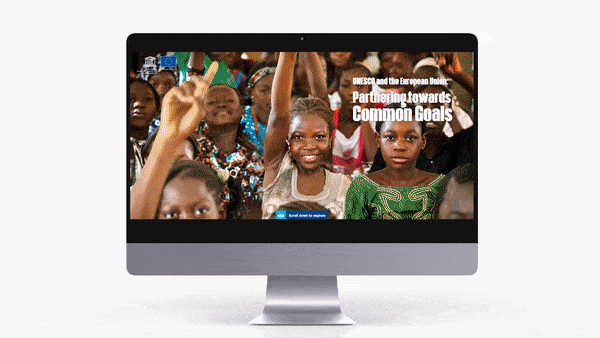In my seven years with Savion Ray, I’ve received and responded to many Requests for Proposals (RFP) from associations, companies, and institutions. To this day, clients still come to me with questions about how they should approach the infamous RFP. While it may seem easy to communicate your organisation’s needs internally, many people struggle with creating an RFP that is short, clear, and gives the right amount of information for a communications company to be able to respond with a relevant proposal.
So, what are the secrets of writing a good RFP? Let’s first begin with the definition. An RFP is a document that an organisation issues to provide information about a new project opportunity to interested parties. A well-written RFP sets the scene for a successful partnership between the client and the agency, communicating the organisation’s needs and project goals.
In this article, I won’t go into detailed parts of the RFP. Instead, I will give you an insider’s perspective and advice from my 10+ years of experience about what works and what doesn’t.
Here are my 7 tips on how to craft a stellar Request for Proposal.
1. The first thing you need to do is get clear about the goals of the project, its purpose, and deliverables. Then, you should really consider if you need an RFP in the first place. If you already have an existing agency partner, I’d advise you to try and engage them first for the task.
If you are looking for a fresh approach or your current partner doesn’t have the necessary skill set, then definitely go for the RFP but be mindful it is costly to onboard a new partner. Most good agencies make their living through repeating business, we build relationships and prefer to work with clients who feel the same way.
2. State clearly the expected level of engagement of the agency. What do you expect from the agency in terms of the process? Be clear at what stage the agency needs to step in. Is it the strategy stage or the execution stage?
Also, emphasize the main project deliverables and what resources the agency is expected to devote. It often happens that the organisation wants to leverage its own resources and create synergy with the agency partner. State in the RFP what internal capabilities your organisation has and wants to leverage so the agency knows where it needs to devote the most time and resources.
3. Put at least an indicative budget in the RFP. Agencies can deliver work for pretty much any budget and if you want to get an accurate proposal, it is best to share your budget. What if you know your budget but have no idea what you can get for it?
It happens that a person with no technical background needs to write an RFP for a website. This can be a frustrating task but the best way to go about it is to have a conversation with the agencies you plan on inviting. Setting a call and asking questions directly gives both the organisation and the agency a better sense of what to expect from a possible partnership on the project.
One of our clients, the German Development Cooperation – GIZ, wanted to have a documentary, explaining e-waste regulations. However, they didn’t have the budget for an original documentary, which is quite costly to produce. We had a discussion with them and settled on a good solution for their budget – we used existing footage and created the script, animations, and voice-over to produce a compelling documentary for the client.

4. Who should you invite to pitch for your project? The answer is for sure not everyone. I’d recommend inviting around three and definitely not more than five agencies to pitch. Inviting too many agencies is time-consuming both for the organisation to evaluate all proposals and the agencies who pitch but have little chance of getting the business.
Remember that submitting an offer is an investment from the agency’s side, so there is a mutual understanding of consideration and respect. Do your research to see which companies fit your organisation’s needs and ask your network for recommendations.
5. Consider when to send the RFP out. This depends on the scope and length of the project but it’s important to give enough time before the intended start of the project. It is not a good practice to choose an agency and have the project start right away. Good agencies usually need at least a few weeks as a buffer to prepare for it.
You should consider that there are often delays with the decision because of negotiations and other setbacks. Give yourself enough time to decide what is the best offer for your organisation.
I’ve had clients ask me, “Isn’t it too early to send out an RFP if the project is intended to start in six months?” No, it’s not. Agencies like to plan ahead so if you book the agency’s time in advance, you are likely to get a better offer and possibly a better price for your project.
6. Be realistic about what you are asking to be included in the proposal. Some clients put extensive demands about what should be in the proposal. Before asking for a ready concept, creative idea, and visual mockups, stop and consider, is the project really so extensive to be demanding that in the proposal.
Agencies put a lot of time and resources into a proposal and being overly demanding will put off some agencies from responding to your RFP. Asking for a specific creative concept at the pitch for a small project is my limit where I’d decline to pitch. You need to go through a process to come up with a creative idea that will be good and relevant, it takes an investment in time. Good ideas don’t just pop out of the blue.
7. Allow for creative freedom in the RFP. I’ve seen many organisations that don’t leave open-endedness on the RFP and remove the creativity both in the description of the project and the budget. If the budget is not big, but the demands of the deliverable are already high, there will be just enough to meet the minimum viable deliverable and not much left to make it truly creative and exceptional. If the budget allows for ‘extras’, the company will find ways to incorporate valuable creative elements and deliver higher value.
Our work with UNESCO illustrates how having creative freedom can result in a great project. We didn’t simply create a website to host a bunch of content but rather had the freedom to experiment and think of ways to present the content in an original way. We ended up creating an interactive digital tool that tells the stories of the projects in a beautiful and attractive way with animations and an interactive map.

If you need guidance or further advice on how to write an RFP, reach out to me at [email protected] and I’d be happy to help you out.



